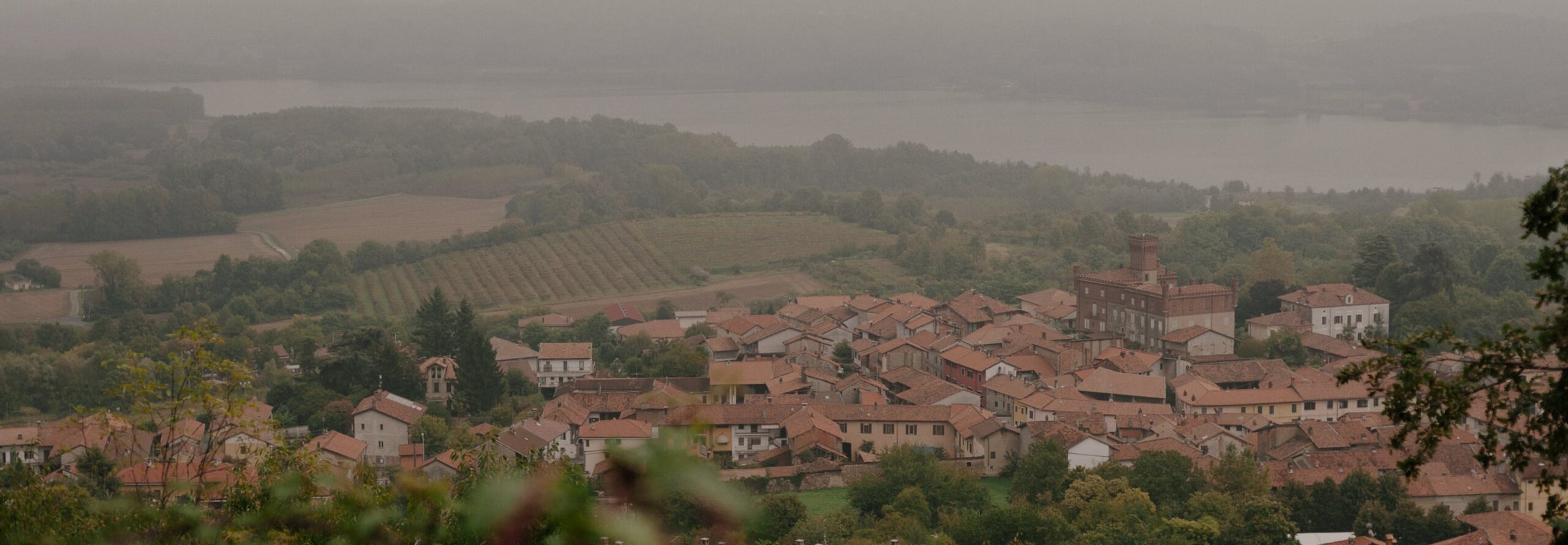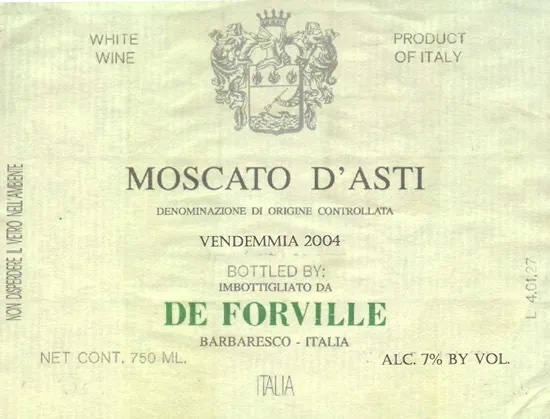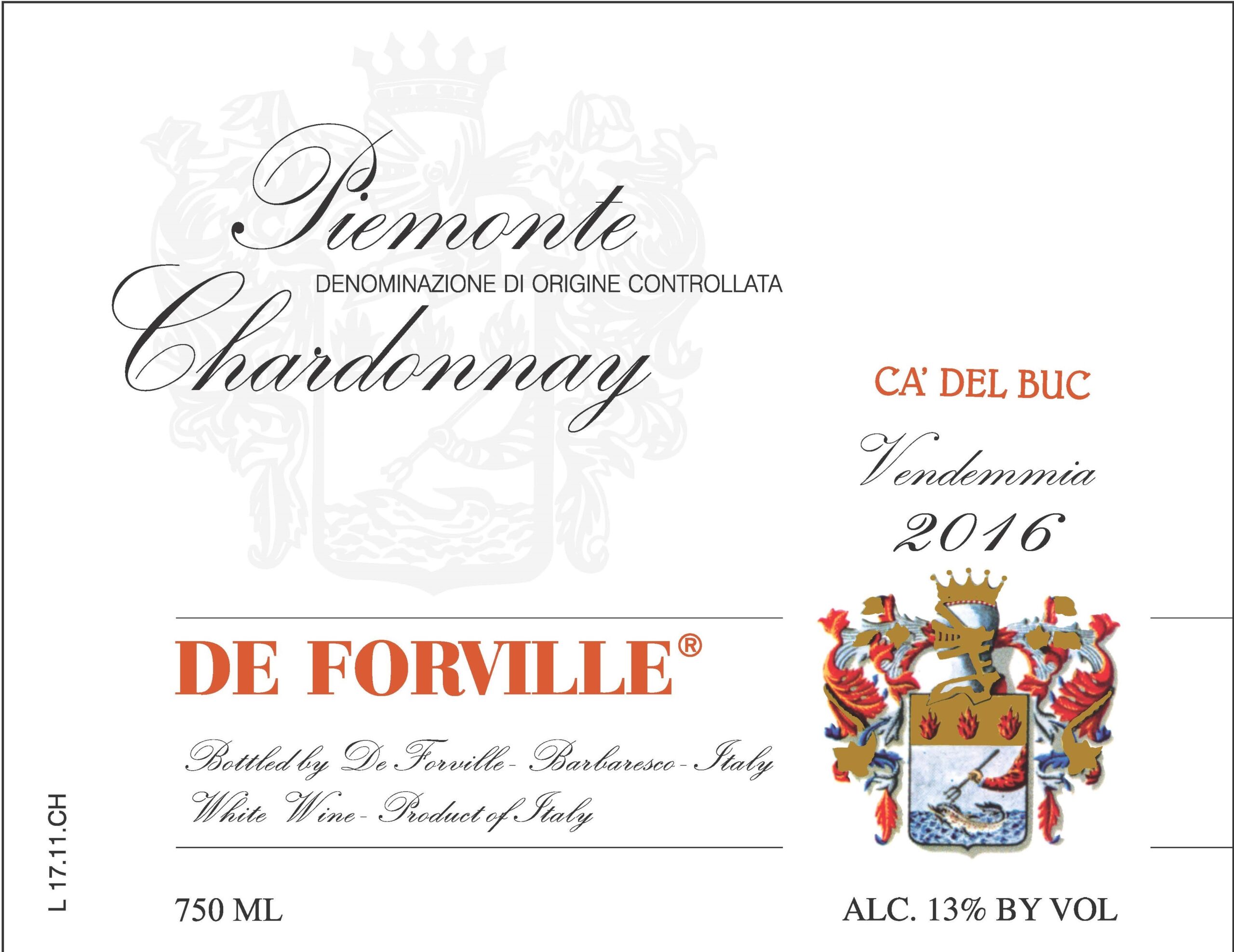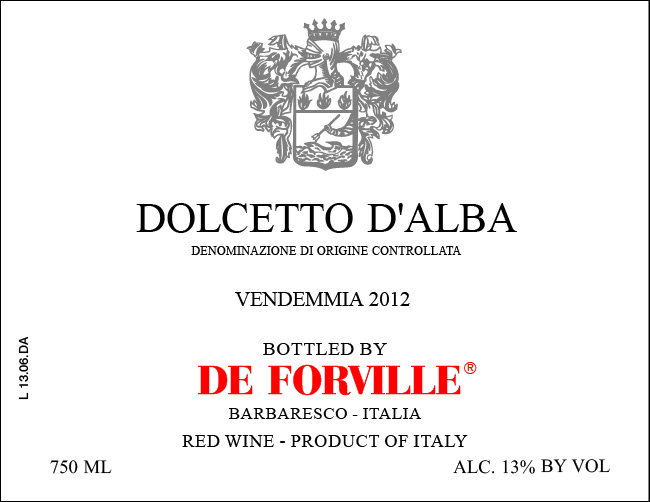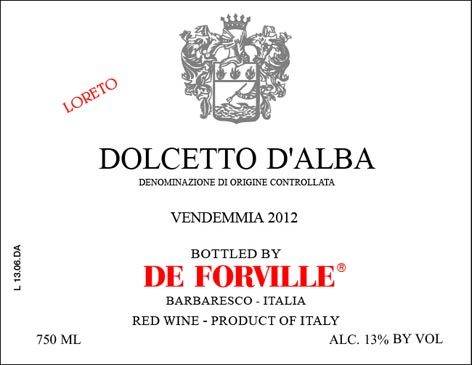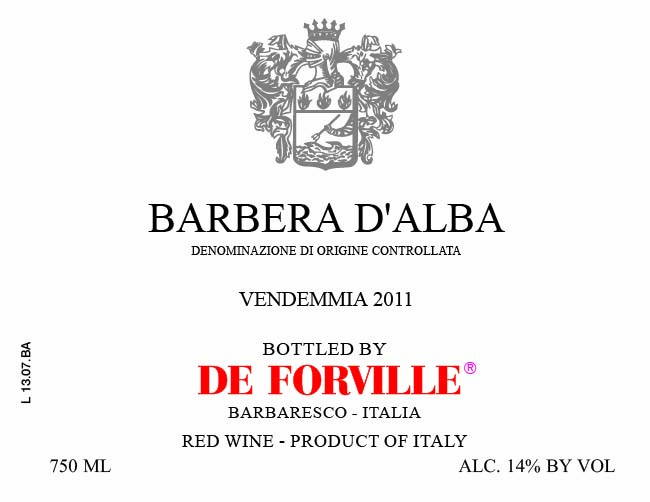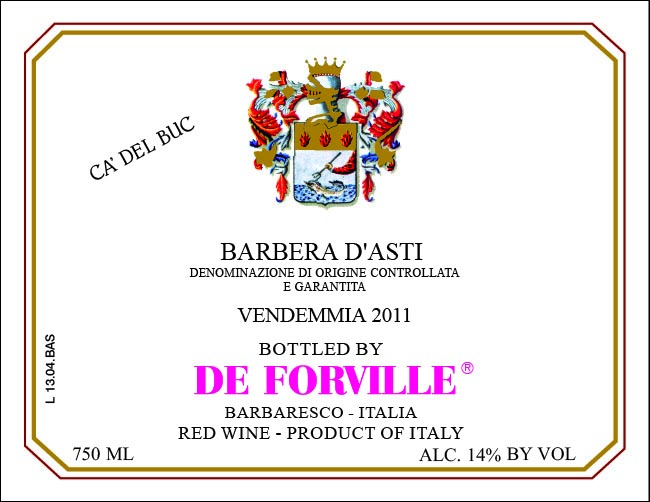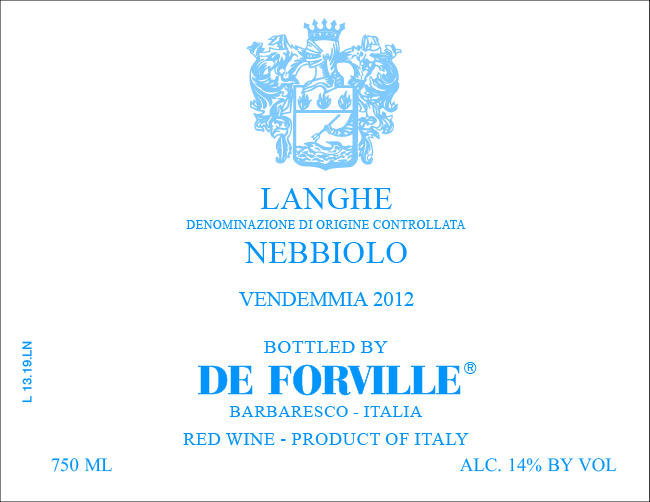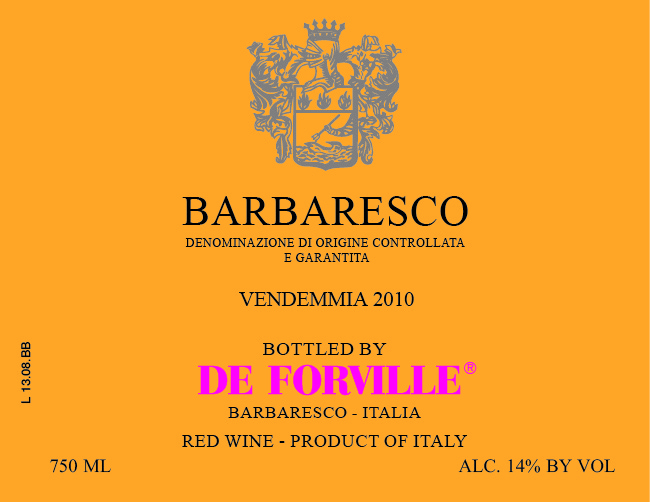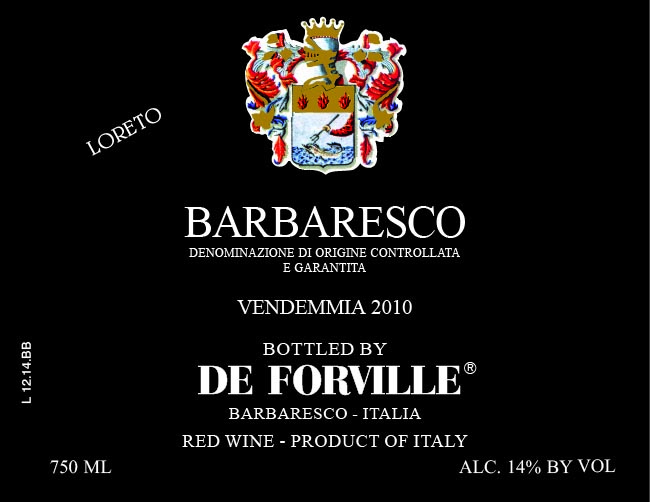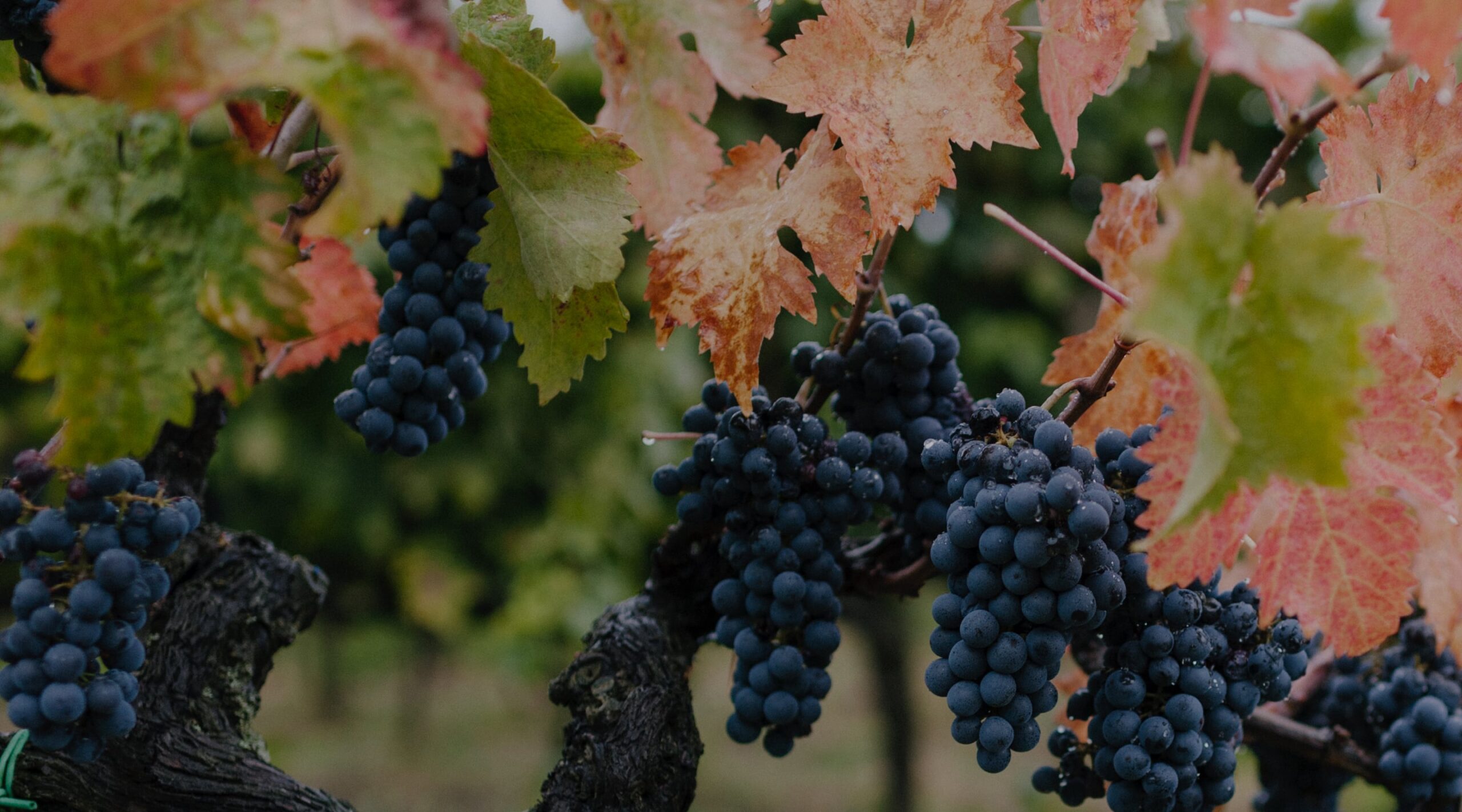
De Forville
Wines
Barbaresco
Moscato d’Asti
The Moscato is harvested from the Ca’del Buc vineyard in the Asti commune of Castagnole Lanze. It is vinified in stainless steel as a naturally sparkling wine with residual sugar. The vines of Muscat Blanc à Petits Grains are 30-35 years of age; the fermentation is blocked when the wine achieves about 5% alcohol and the wine is bottled in late winter or the early spring of the following year. We import 2,400 bottles for the US market.
Piemonte Chardonnay, “Ca’ del Buc”
From the Ca del Buc vineyard site in Castagnole Lanze, the Chardonnay vines are now 35 years of age having been planted in place of an old vineyard of Grignolino in the early 1980s. Vinified and aged exclusively in stainless steel, the Piemonte Chardonnay is brisk and clean but rather full-bodied as it naturally achieves 13% alcohol annually. The wine is bottled in the spring of the year following harvest then given several months of bottle age before being shipped to the USA. We import between 7,200 and 9,000 bottles per annum for the US market.
Dolcetto d’Alba
This typical red of the Langhe region is harvested from three separate parcels spread between the communes of Barbaresco and Neive. The vines are an average age of 30 years. After a fermentation of approximately 10 days in stainless steel, the wine is racked into large oak “botti” for about six months, being bottled at the onset of summer of the following year. In vintages of normal production, we ship 6,000 bottles for the US market.
Dolcetto d’Alba, “Loreto”
This special cuvée is harvested from older vines within the “cru” of Loreto in the confines of the village of Barbaresco. The primary fermentation occurs in stainless steel for a 10 day period; then, the wine is racked into oak “botti” to age for a year prior to bottling. This is a particularly robust wine that shows a complexity rare to find in Dolcetto. One finds the flavors and aromas of earth mingled with wild berries and compelling presence of grainy, dusty and sweet tannin. We import 300 cases of this cuvée annually.
Barbera d’Alba
This vibrant, full-bodied red is a blend of grapes harvested in parcels spread amongst the three communes of Barbaresco, Neive and Alba. Included as the primary source are grapes harvested in the cru “Ga’Grosso” in Barbaresco. The grapes are crushed and are then fermented in stainless steel for almost two weeks after which the wine is racked into oak barrels and “botti” for one year prior to bottling. The average age of the vines is 30 years. We import between 7,500 and 9,000 bottles per annum for the US market.
Barbera d’Asti, “Ca’ del Buc”
This Barbera is from the “Ca del Buc” family “cru” in Castagnole Lanze. The vines are relatively young (20 years old) but the wine is already quite concentrated and full of character. A touch more racy with notes of game, this Barbera speaks of its origins in the Asti district as opposed to the more somber and elegant wines from the Alba zone. As with the Barbera d’Alba, this Barbera d’Asti is fermented in stainless steel for 10 days to two weeks and is racked into oak barrels and “botti” for 12 months before bottling. We import approximately 4,200 bottles per annum for sale in the USA.
Langhe Nebbiolo
This cuvée is a selection of Nebbiolo from the younger vines of the various “cru” in Barbaresco supplemented by grapes from the neighboring village of Neive. The average age of the vines is 30 years. The wine is fermented in stainless steel for 10 days to 2 weeks and then is refined in large oak barrels for an additional year before being bottled. An astonishing value … as are all of the fine wines from this remarkable estate. We import as much as 9,600 bottles per year of the Langhe Nebbiolo.
Nebbiolo d’Alba, “San Rocco”
This very special cuvée originates from vines located in the commune of San Rocco d’Elvio which is perched on a hilltop in between the Barbaresco and Barolo zones. Effectively, we consider this wine to be the “Barolo” of the De Forville estate as its structure more closely resembles that of Barolo than it does Barbaresco. The tannins are more firm, the fruit darker, the wine more somber. Handled in a fashion similar to the vinification of the Barbarescos made at the estate, the wine undergoes a longer fermentation and élevage than does the Langhe Nebbiolo and is released later. Production for the US market is approximately 3,000 bottles per year.
Barbaresco
This is the standard-bearer for the estate. The vines are planted within the confines of Barbaresco scattered among various crus, including Rabajà and Pozzo. The average age of the vines is 35 years. After harvest, the juice is fermented in stainless steel for approximately two weeks; then the wine is racked into large oak “botti” to age at least 18 additional months. This wine is emblematic of the work done at the De Forville estate: the wine is rigorously traditional, marrying the finesse of Barbaresco with the alluring aromas and flavors of truffle, earth, berries, rose, tar and leather and carrying, most important of all, a backbone of sweet, dusty tannins that give length and breed.
Barbaresco, “Loreto”
The exceptional Loreto cru of Barbaresco is the source for this most profound wine of the De Forville estate. As with the Barbaresco “Normale”, the juice is fermented in stainless steel and then racked into large oak “botti” for about two years of aging before being bottled. Vines are approximately 40 years of age. More full-bodied and dense than the “Normale”, the “Loreto” also has additional aging capacity. We import approximately 4,200 bottles per annum for the US market.
